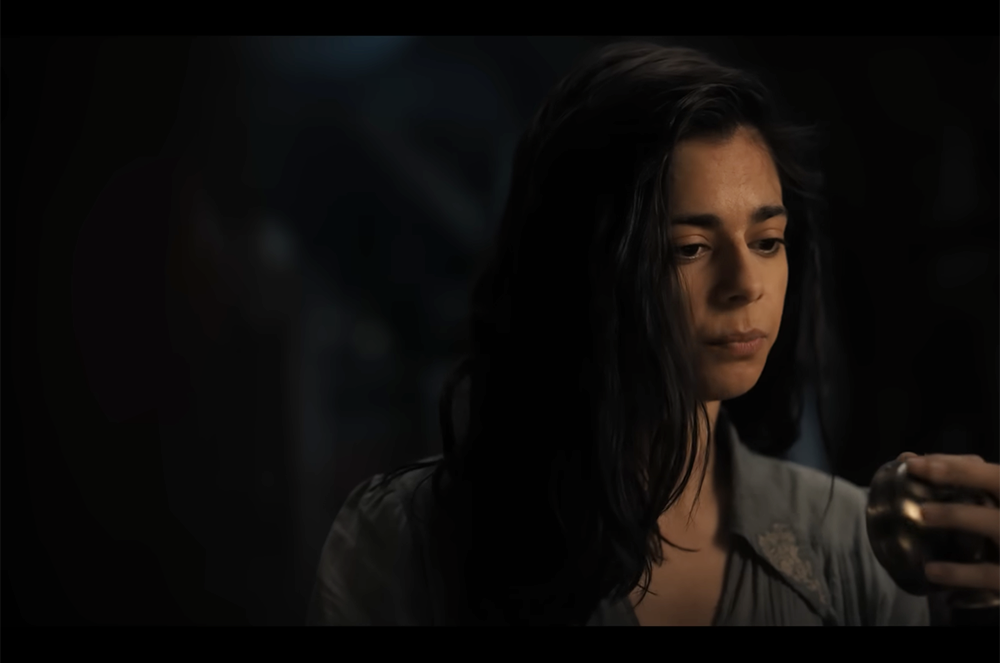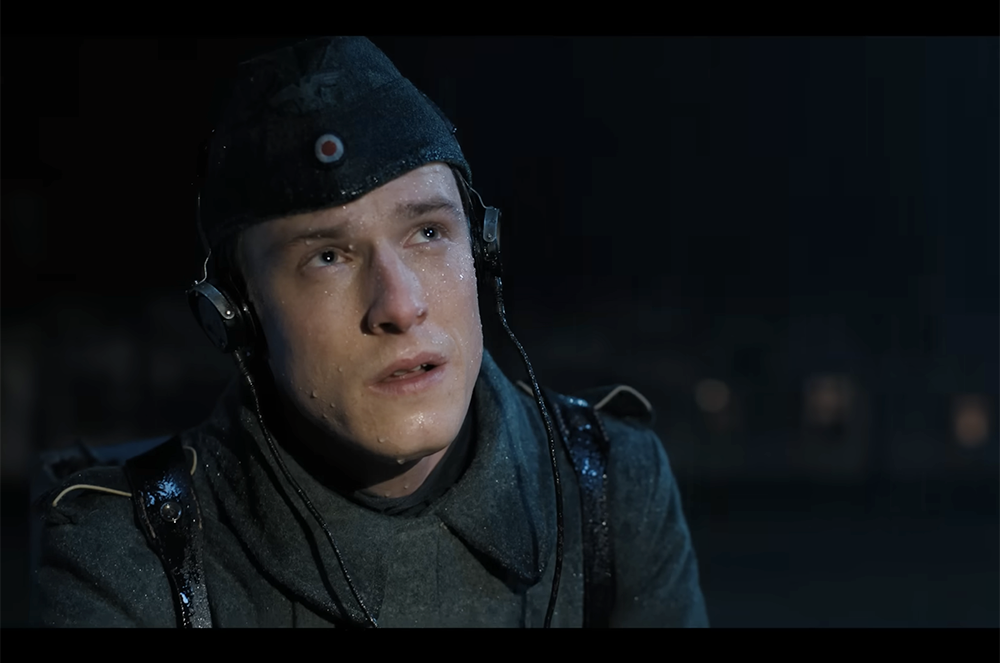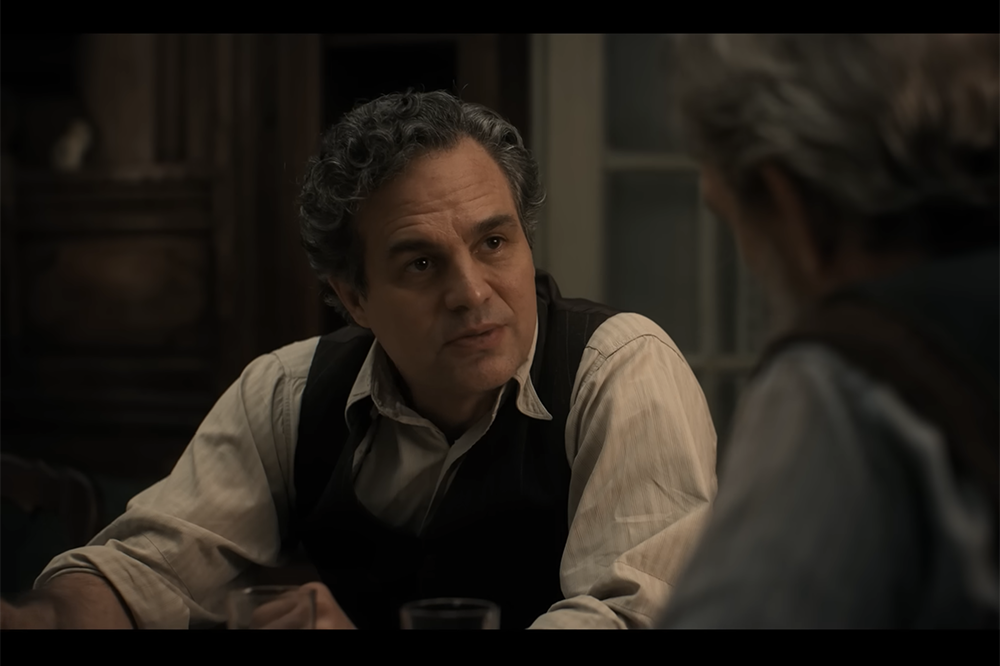
Aria Mia Loberti stars in "All the Light We Cannot See" on Netflix (NCR screenshot/YouTube/Netflix)
The new Netflix miniseries "All the Light We Cannot See," based on the Pulitzer Prize winning novel by Anthony Doerr, opens with a quote from Jules Verne's Twenty Thousand Leagues Under the Sea. "The great depths of the ocean are unknown to us," says the young, blind Marie-Laure LeBlanc into her radio microphone.
Outside her attic window, American planes drop bombs on the Nazi-occupied, seaside town of Saint-Malo, France. Unphased even when a bomb explodes the glass pane and throws her from her chair, Marie-Laure continues. "We should consider that any species of monster is possibly out there in the darkness and in the depths."
Advertisement
Across town, a teenage German soldier, Werner Pfennig, listens on his receiver — a receiver meant to discover illegal radio transmissions like Marie-Laure's, illegal radio transmissions that are punishable by death. As Marie-Laure says the word "monster," the camera zooms in on Werner's serious, trembling face. Perhaps, the image suggests, Werner the Nazi is the monster lurking in the depths.
We quickly learn otherwise. Werner may be wearing the enemy's uniform, and certainly he has participated in terrible, unspeakable things — later, he confesses to such things without hesitation — but this is a miniseries about how sight can be deceptive. What looks one way, might be another. The invisible may be what matters most. The one who is blind may be able to see best. As the refrain goes throughout the series, "The most important light of all is all the light we cannot see."
Werner is more than his Nazi-issued uniform. Marie-Laure is more than her blindness. When the SS officer Reinhold von Rumpel claims to have the light — he is talking about a physical flashlight — we are meant to understand that he is the one who lives in utter darkness.
Throughout the series, the "light we cannot see" becomes a kind of poetic refrain for everything good, true and beautiful that surely exists even if we cannot see it, even if signs point to its not existing at all. Viewers might go so far as to see a vision of the kingdom of God in this story, an upside down, hidden world that nonetheless exists, and is in fact even more important and meaningful than what we can see with just our two eyes.

Louis Hofmann stars in "All the Light We Cannot See" on Netflix (NCR screenshot/YouTube/Netflix)
Those familiar with Doerr's masterpiece will be pleased to find the screenplay only diverges from the book when necessary for dramatic effect — and the series is full of the best kind of drama. You will find yourself on the edge of your seat. All the main characters are here. Not only blind and inquisitive Marie-Laure (played as a child by Nell Sutton and as a teenager by Aria Mia Loberti, who are making Hollywood history as the first actresses who are legally blind to play leading roles in a production of this scale) and heroic and frighteningly intelligent Werner (played as a teenager by Louis Hofmann). But also, timid, and tender Uncle Ettienne (Hugh Laurie); Marie-Laure's rational and devoted father, Daniel LeBlanc (Mark Ruffalo); and the ailing SS officer Reinhold von Rumpel (Lars Eidinger) who will do anything to accomplish his desperate search for the Sea of Flames.
The Sea of Flames is a diamond, the largest, most beautiful diamond in Paris' Museum of Natural History where Marie-Laure's father worked as master of the keys until the Nazi occupation. Marie-Laure and her father flee from Paris to Saint-Malo, where they hope they and the diamond will be safe. The legend goes that whoever possesses the Sea of Flames will live forever.
But a curse accompanies the blessing. The loved ones of any who touch the diamond will suffer terrible misfortune. Which raises the question: is Marie-Laure blind because her father touched the Sea of Flames? Marie-Laure's father insists not. He is a rational man, a scientist. He does not believe in curses. More than that: he insists that Marie-Laure's blindness is a blessing. Once again, we have a character who can see in something most would call a misfortune — blindness — to be something else — a gift.
The young and innocent may be the only ones who can receive truth, beauty and goodness in a world that, as Marie-Laure puts it, is destroying itself.
At the heart of this series is the radio. Invented in the late 1800s and widespread by the time of World War II, the radio transmits sound via waves — the most obvious and explicit example in the series of a kind of light we cannot see. Werner is a radio genius. As a little boy in Germany, he builds a radio out of pieces of trash (again, a kind of seeing: finding value in things that other people understand as disposable). He hides under the covers in the orphanage where he lives, listening to an illegal broadcast by a professor in France who talks about truth, beauty and imagination. In Paris, a world away, a young Marie-Laure listens to the same professor on her radio.
The professor, it turns out, is a World War I veteran who has paralyzing post-traumatic stress from his time fighting in the trenches. He sees things that are not there: memories of death in the trenches haunt him. And yet, from his psychological war wounds come a teaching we only catch in glimpses, and it is this teaching that touches Marie-Laure, giving her the courage to work for the French resistance, and Werner, giving him a shred of hope despite the evil that surrounds him. The professor speaks to children, suggesting, in a way that calls to mind Jesus' admonition in Matthew to be childlike, that the young and innocent may be the only ones who can receive truth, beauty and goodness in a world that, as Marie-Laure puts it, is destroying itself.

Mark Ruffalo stars in "All the Light We Cannot See" on Netflix (NCR screenshot/YouTube/Netflix)
Visually, the series is full of light — light of the worst kind. Bombs explode in flashes of fire. Artillery bombards the city, burning old stone buildings down to rubble. Flashes from gunfire streak through a dark sky. Toward the end of the series, von Rumpel asks, which is stronger, pain or love? He claims that pain is stronger, and from what we see on the screen, the destruction and horror of war, we might be tempted to agree.
But Marie-Laure and Werner insist otherwise. Love is stronger. Love cannot be touched by pain. Love, ultimately, is the most important light we cannot see — an idea that once again recalls passages from the gospel where Jesus, who so often sees goodness where others see nothing, associates himself, his love, his life with light. As their dear professor puts it, "Darkness lasts not even for one second when you turn on the light."








